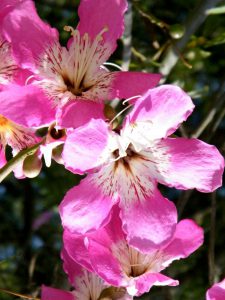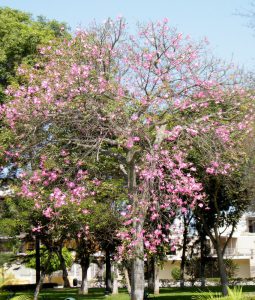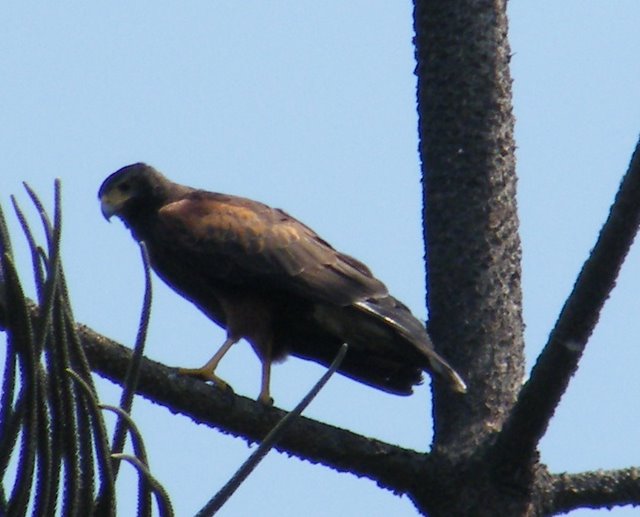Feels like spring in Lima, in spite that it’s autumn.
Flowering Trees in the autumn in Lima

Frangipani Plumeria obtusa is a popular ornamental tree in the tropics. This particular species (if I identified it right) is originally from Colombia.
Lima is covered in sunshine still. It is true that the coastal fog sets in on the waterfront of Miraflores in early mornings and late afternoons, but just two kilometers inland we still enjoy nice warm completely sunny days all day long. We are supposed to getting chillier days soon and a couple of months without any sun – just gray and foggy days. Sadly enough, this is the Lima that most tourists will see. They tend to come mostly in June-September to visit Manu and Machu Picchu, coinciding with the distinct dry season of the South East of Peru, as well as the main holiday season of the Northern hemisphere. In a way it is sad they don’t get to experience the nice and sunny days of Lima.
For once, this post is not a post about birds, it is about trees and flowers in Lima right now. I am writing this post partly because I want to document some of the plant life in Lima but partly because I thought it’d be a good contribution to Festival of the Trees blog carnival with deadline tomorrow as I write this. Also, I hope maybe some of the tree experts participating in the carnival can help me correct my ID:s.
I learnt some about garden plants when I was guiding in Madeira in the late 80s and early 90s. Some say that Madeira is an immense Botanical Garden. I enjoy finding many of the plants I recognise from Madeira in bloom here in Lima as well, such as this Cape Leadwort Plumbago auriculata, originally from South Africa.
An interesting fact is that that flower calyx has glandular hairs with sticky mucilage that protects the flower from piratic insects that would steal pollen or nectar without pollinating the flower. The insect would stick and eventually die. It is thought that such defence against unwanted pollenators is the orign of many carnivorous plants, such as Sundew Drosera sp that also have sticky surfaces or tentacles to trap insects. Drosera belongs to the same order Caryophyllales as the Leadworts.
Floss Silk Tree Ceiba speciosa
I was wondering whether I, mostly a birder could, or even should, submit something to a blog carnival of trees. I don’t know much about trees I must admit. However, the decisive tree that is in bloom right now in Lima is the Floss Silk Tree, with the lovely pink flowers on bare branches devoid of leaves, made me give in. Such tree make even the most intense birder a tree-lover. What is more, it is a favorite haunt of the feral Canary-winged Parakeets and the Pacific Parrotlets that usually are very difficult to see, except when they are in the leafless Ceiba. This tree native of SE Brazil and adjacent Argentina and Paraguay, is closely related to the Kapok tree Ceiba pentranda of the Amazon. Look at the flowers! Yes, it does belong to the Malva family Malvaceae!
Bougainvillea
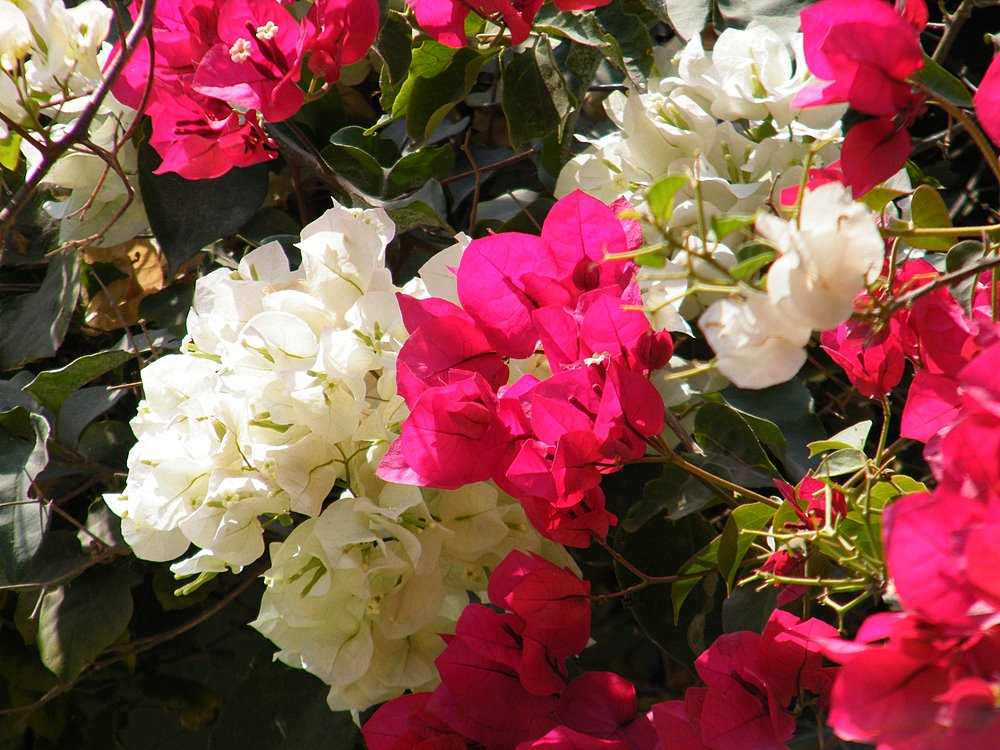
Bougainvillea hardly needs any presentation. It is widely cultivated in the tropics but has South American origin. Many cultivated forms are hybrids and sterile and come in a variety of colors. It can be found in full bloom now and is often visited by the Amazilia Hummingbird.
Norfolk Pine Araucaria heterophylla
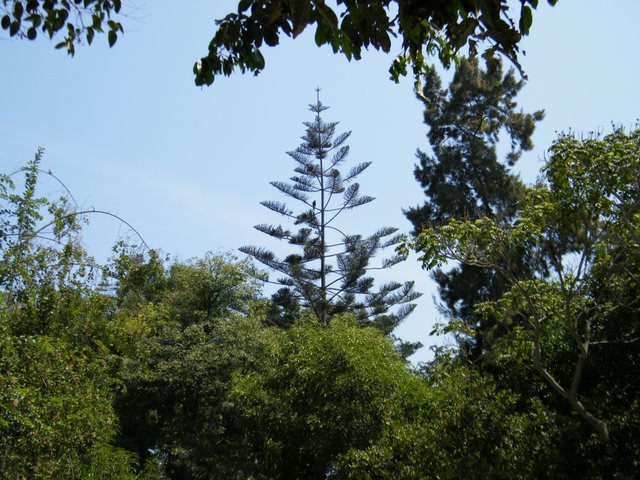
This is one of my favorite garden trees. The Norfolk Pine Araucaria heterophylla from the island of Norfolk discovered by Captain Cook in 1774. When it is young it looks like a minimalistic completely symmetric Christmas Tree. Old, as this tree in the picture, it is less symmetrical, but still a great place tree to spot a lone raptor. Look carefully!
There it is – the Harris Hawk and finally a bird in this blog post by a birder about trees. Could not do this without one – could I?


